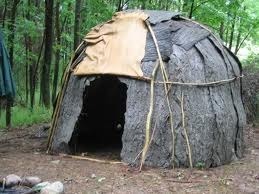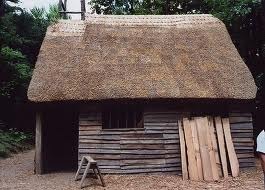Eight is Enough, especially in bed
I'm pleased to present the FIRST of a series of guest posts by some special friends who are knowledgeable about the culture of the 17th century, during which William and Mary Dyer lived their remarkable lives. Jo Ann Butler has kindly written this post based on her university degree in archaeology and research for the trilogy of historical novels she's writing (see footnote).
© Jo Ann Butler* (use in this site by author's permission)
We've all lived without electricity and heat for the duration of a poweroutage. A few of us have done so for longer, perhaps tenting in the woods for afew days, or a week at scout camp. I'll bet that you were grateful to get hometo light, warmth, and tap water.
I spent a summer in a tent during my student archaeologist years. My crew bathedin a pond, cooked on a propane stove, and swatted mosquitoes as we cataloguedartifacts under a string of bare light bulbs. It was a memorable experience,but I enjoyed it. If it had been January rather than July, my memories wouldhave been far less pleasant.
 A wigwam of poles and reed mats
A wigwam of poles and reed matsMy primitive summer was voluntary, but people in the 17th century knew no otherlife. Mary and William Dyer neverfelt the joy of hot water piped into their home, and they couldn't turn up thethermostat on a cold night. Firewood, quilts, and body heat were all that keptthe Dyers warm at night.
When the Dyers landed at Bostonin 1635 and picked out a home lot, they needed shelter as quickly as possible.They may have lived with friends in the town, or in a tent like I did, or they may have used an Indian-stylewigwam. To make a wigwam, create a tunnel by jabbing two rows of poles into the ground, bend themover, and then tie them at the top. Cover them and close one end of the tunnelwith woven reed mats, and use another mat or a deer hide for a door. The wigwamwasn't warm or waterproof, but the occupants could be under cover in a day.
A dugout was hard work to make, but would last two or three years, and it waswarmer. Dig a hole into a hillside, tall enough to stand inside, and as wideand long as you wish. Line it with sawed planks or bark slabs. Close the openside of the pit with a plank wall equipped with a door. Roof it with polerafters covered with bark, thatch, or turf. Dugouts were damp and dark, forthey were often built without windows. However, their inhabitants were safelyindoors.
 Reconstruction of a colonial house
Reconstruction of a colonial house in Plymouth, Massachusetts.
With the family's first shelter built, the Dyers turned their attention to amore permanent home. Houses were small in New England'searly years for sensible reasons. A small home is more quickly built, and iseasier to keep warm than a large one. The Dyers' first house was probably asingle room structure, with a squared timber frame. The walls were sawedplanks, or withy filled in with a latticework of twigs slathered with mud.Forget about log cabins – that building style was not used in New England. The walls probably rested on timber sills set into theground, and the home had either a plank flooring, or bare dirt.
The size of the one-room home depended on the size of trees availableand how much time the owner (or the men he hired to build the home) wishedto spend on sawing planks and squaring timbers for the frame. Even a 12'x16'interior would serve for a small family, with rooms added later as the familygrew.
The Dyers' home was heated by a wood fire laid on hearthstones on the shortside of the home. Chimneys were a rather new innovation when the Dyers came to Boston. Formerly, smokeescaped from a house via a hole cut into the roof, but William and Maryprobably had a chimney built of logs plastered with mud. Such "cat and clay"chimneys were easier to build than stonework, but if the clay coating cracked,disastrous fires were the result.
It was hard to keep even a small room warm with a wood fire,especially during winter storms. The simplest way to sleep warm at night? Pileall of the family members into a single bed. Mary and William Dyer had sixchildren who survived infancy (born 1635, 1640, 1643, 1647, 1648, and 1650).
In warmer weather, a family's older children may havepreferred to find less crowded sleeping spots, especially after the family homewas expanded, but parents and younger children often shared a common bed. If thefamily had company overnight, they may have shared the communal covers.Privacy, as we know it, barely existed, unless the family was prosperous--as the Dyers were. [image error] Chamber pot
Let me close with one more factoid about my primitive summer. With no plumbingbut a well, several times a day we faced a 1000-yard walk to the privy. The 17th-century privy was probably much nearer to the house. Therewas far less concern with how close one's outhouse lay to one's drinking water.During their cold winter nights, the Dyers would use chamber pots, and thenempty them in the morning. No matter how nostalgic I feel about the 17thcentury, or even my summer's campout, when I think of Mary and William Dyer'sfrigid, drafty outhouse, I am grateful for modern plumbing!
_____________ *Jo Ann Butler, of Fulton, New York, is author of Rebel Puritan, the first in a historical novel series about Herodias Long HicksGardner, who lived in Massachusetts and Rhode Island and knewthe Dyers. www.rebelpuritan.com
Published on October 12, 2011 22:54
No comments have been added yet.



